{NOTE: Highlight area to zoom and double-click graph to return to default view.}
NO2+NO3
TSSeq (mg/L)
Abs360 (AU)
SAC254 (1/m)
Temp_C
ODO_prcnt_Sat
ODO_mg/L
SpCond_uS/cm
Sal_psu
Turbidity_FNU
Phycocyanin_RFU
Chlorophyll_RFU
Depth_m
Press_psi_a
No data to date
No data to date
No data to date
No data to date
No data to date
No data to date
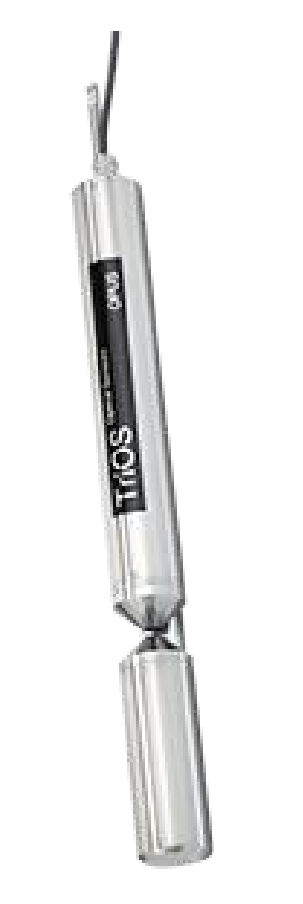 |
TriOS OPUSThe University of Louisiana at Lafayette (ULL) deploys the TriOS OPUS sensor in cooperation with the LO-SPAT project at Mosquito Bight in Eloi Bay, Chandeleur Sound, Louisiana. The TriOS OPUS deployed by ULL measures nitrate as NO3 (mg/L), spectral attenuation coefficient at 254 nm (SAC254), and total suspended solids (TSSeq) by optical spectrum analysis. The OPUS nitrate detection range and environmental limitations vary with pathlength. The 10 mm pathlength OPUS was selected for the ULL deployment site in Chandeleur Sound, Louisiana. 
Supporting links: |
No data to date
{NOTE: Highlight area to zoom and double-click graph to return to default view.}
NO2+NO3
Water Temperature
CDOM
Conductivity
Turbidity
Salinity
Sensor Depth
Dissolved Oxygen (Saturated)
Dissolved Oxygen
Chlorophyll
No data to date
{NOTE: Highlight area to zoom and double-click graph to return to default view.}
NO3
No data to date
No data to date
No data to date
 |
The Systea WIZ nitrate sensor is deployed by the Sanibel-Captiva Conservation Foundation (SCCF) in Fort Myers, Florida; Mote Marine Lab (MML) in Sarasota, Florida; and, the Louisiana Universities Marine Consortium (LUMCON) in Chauvin, Louisiana. Texas A&M University (TAMU) in Freeport, Texas will deploy a WIZ nitrate sensor. The WIZ nitrate measures nitrate as N+N (μM). The Systea WIZ phosphate sensor is deployed by the Grand Bay NERR in Moss Point, Mississippi. The WIZ phosphate measures phosphate as soluble reactive phosphate, SRP (μM). The WIZ is capable of multi-channel measurements for the simultaneous detection of multiple nutrients. Thus far, all WIZ units deployed within the GOM Nutrient Sensor network are single-nutrient monitors. SCCF and Grand Bay NERR operate a WIZ with a 0.1 um pore size intake filter. Mote and LUMCON operate a WIZ with a 25 um pore size intake filter. 
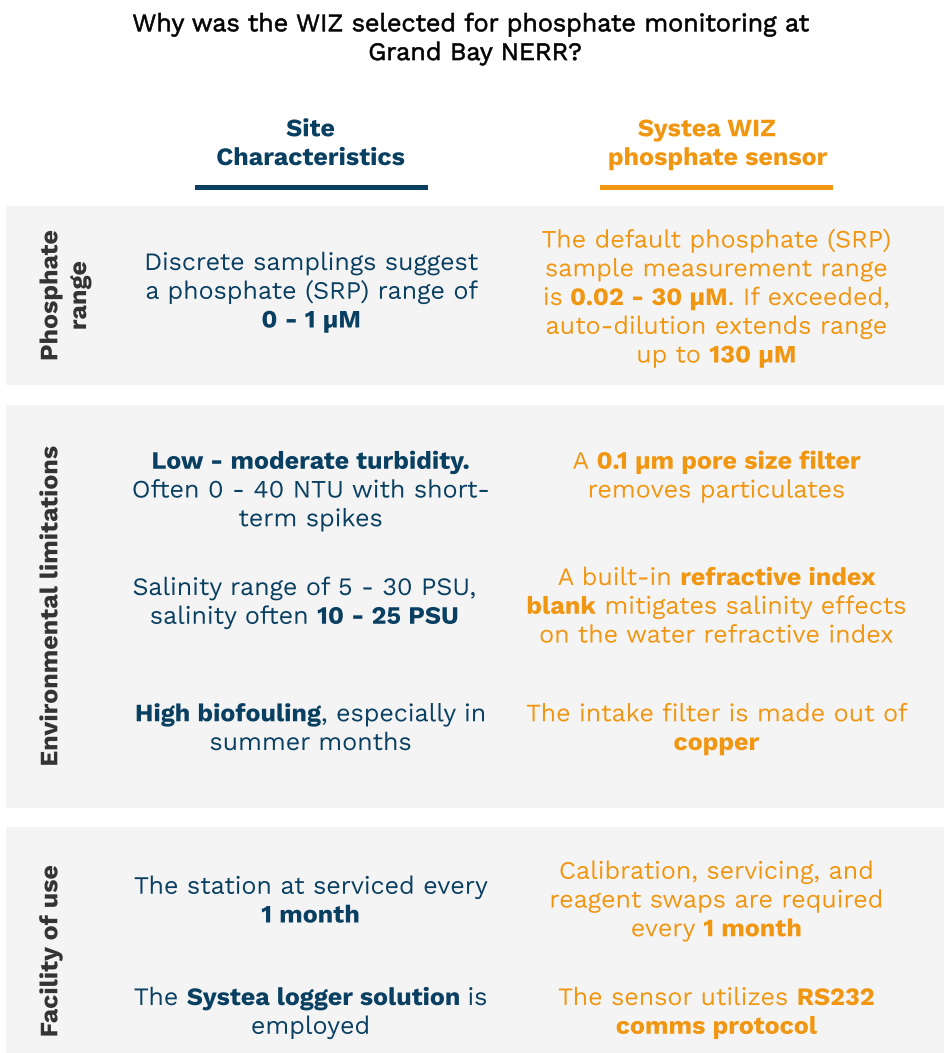
Supporting links: Mote Marine Lab Chemical and Physical Ecology |
No data to date
No data to date
No data to date
No data to date
No data to date
No data to date
No data to date
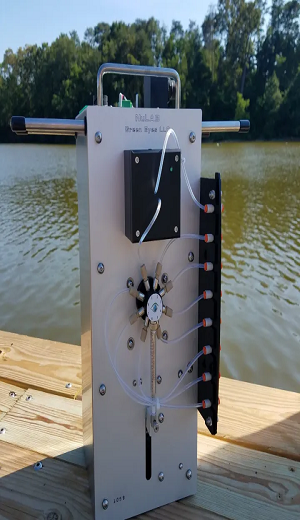 |
The Green Eyes NuLAB nitrate and phosphate sensor is deployed for a demo test by the Mission-Aransas NERR / University of Texas Marine Science Institute (UT MSI) in Port Aransas, Texas. The NuLAB measures nitrate as N+N (μM) and phosphate as soluble reactive phosphate, SRP (μM). The NuLAB deployed by UT MSI is a multi-channel nutrient monitor, simultaneously detecting nitrate and phosphate on separate analytical units. 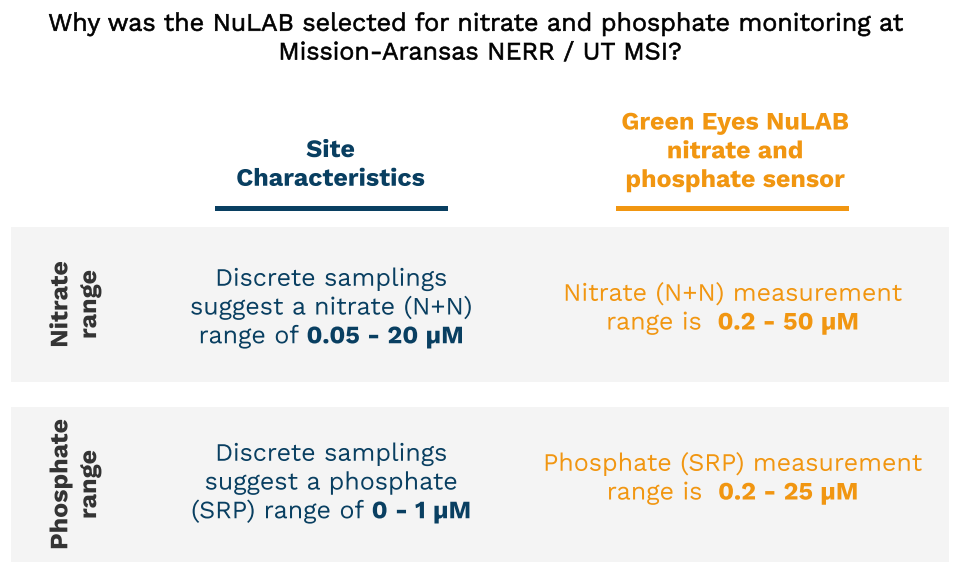
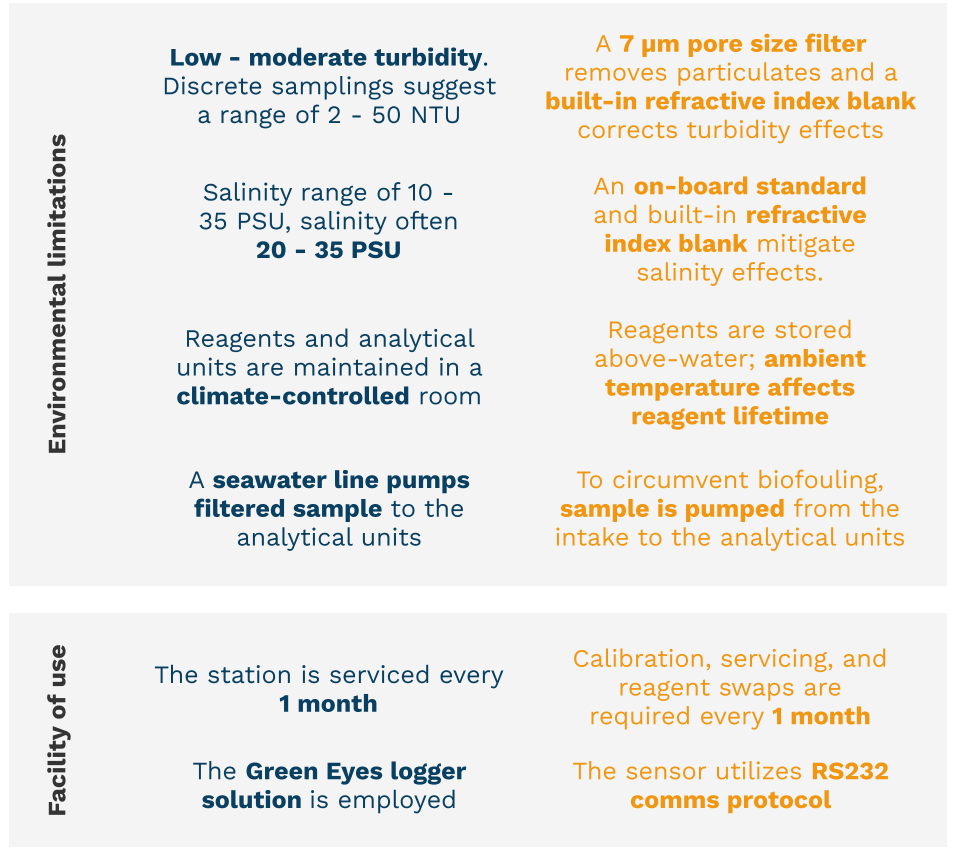
Supporting links: |











